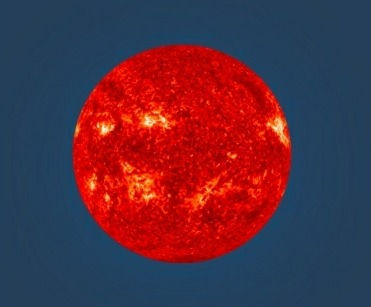SUN
- Jeril Varghese Jiju

- Jun 5, 2020
- 2 min read
he Sun is a star, the only one we can see during the daytime. When we look in the night sky, we see endless dots of light, every one of them is a star just like our Sun.
Key Facts & Summary
The Sun is located in the center of the Solar System. It is a nearly perfect sphere of hot plasma, essentially, a hot ball of glowing gases.
It is the most important source of energy for life on Earth.
The Sun has a diameter of around 1.39 million kilometers / 864,000 miles. This is 109 times greater than the diameter of our planet.
The Sun’s mass consists of 73% hydrogen, 25% helium, and smaller amounts of oxygen, carbon, neon, iron, and other elements.
The Sun is so massive that it accounts for 99.86% of the total mass of the entire Solar System.
The Sun currently fuses around 600 million tons of hydrogen into helium every second. It is converting 4 million tons of matter into energy every second as a result.
This energy is the source of the Sun’s light and heat. It can take between 10,000 and 170,000 years for this energy to escape from the Sun’s core.
Every star is classified based upon their physical characteristics. Our Sun is labeled as a G-type main-sequence star or G2V.
The Sun is approximately 4.6 billion years old.
Many cultures from around the world associated the Sun with their most important deity or a very prominent one, and for good reason! Without the Sun, we wouldn’t exist.
The connection and interactions between the Sun and Earth drive the seasons, ocean currents, weather, climate, radiation belts, and aurorae.
Though there are billions of stars in the galaxy, our Sun will always be the most special star.
The Sun spins once every 25 days, but at its poles, it rotates once every 35 days.
The Sun’s core is about 27 million degrees Fahrenheit / 15 million degrees Celsius.
T

he English word “sun” developed from Old English “sunne.” Many cultures throughout the world had solar deities in their religions and mythologies.


Comments